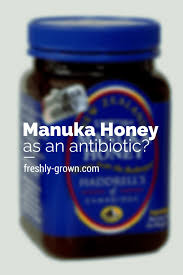New Zealand Manuka Honey: Natural Antibiotic
We can speak about healing properties of honey as a bees-keeping product endlessly. But there is an opinion that amongst all kinds and sorts of honey there is one kind that helps to treat the most serious diseases, and it is called Tea tree honey, or Manuka honey – the most effective anti-inflammatory, antiviral, antiseptic and antibacterial remedy.
Many of us have never even heard of it. And even if we have, it is highly doubtful that any one of us has actually seen it being sold in stores. Besides, we have no idea of how effective Manuka honey is: in fact, it’s so potent that it can substitute various medications. It is a rare and exclusive kind of honey. Its name doesn’t tell you what type of honey it is, where and which honey plant it is coming from; the name itself is very unusual.
Manuka honey is a “sweet gold” of New Zealanders
The answers about the name of this product and its extremely beneficial properties can be found in the areas where Manuka tea shrub grows, its unattractive flowers attract bees that collect a special nectar containing natural antibiotic that endows Manuka honey with an unusual healing power.
In order to do that, we must travel to New Zealand first – the purest corner of our planet; its wild lands have been preserved until today in their authentic shape and form. In this country, thanks to isolation of nature, the soil, flora and fauna look exactly how they used to look many centuries ago.
These blessed lands bear shrubs called Manuka. Many people use tea tree oil and are aware of its disinfecting properties. So here it is: a medicinal plant that also produces honey.
The government of this country controls honey production very strictly. Therefore, additional feeding of bees with syrups or sucrose – with the purpose of increasing the amount of honey during harvesting – is impossible. The honey produced in New Zealand is certified and is absolutely natural; it is of the highest quality and has unique properties.
In order to harvest pure honey from other honey plants without any additives, bees-keepers of New Zealand harvest it where tea shrubs grow an only in eco-friendly areas. Besides, New Zealand bees have a strong immune system and they don’t suffer bees’ illnesses that require additional, chemical feeding.
Manuka honey: what is so special about it?
Even those who have minimum medical knowledge are aware of the fact that the bacteria called staphylococcus (and especially one particular kind – S. aureus) poses danger to people’s health, and no antibiotics out there are able to fight it.
Local residents in New Zealand have known about the healing properties of Manuka flower for a long time, and they have been using it to cure wounds, bruises and abrasions. Quite recently, a few decades ago, scientists showed interest in Manuka honey too. They found antibacterial component in the honey, which can fight S. aureus and other dangerous bacteria.
It is called methyl glyoxal (MGO) and the amount of it affects the healing properties of Manuka honey (this ingredient is present in many honey types but not in large amounts). The amount can vary between 30 and 1000 mg for 1 kg of honey.
Methyl glyoxal defines the level of activity of honey, and scientists measure it by UMF (Unique Manuka Factor). The higher the UMF, the better the healing properties.
Methyl glyoxal, when penetrating the cell affected by bacteria, removes liquid from the cell. Harmful bacteria lose their source of nutrition and die and the cell rapidly restores itself.
To understand which honey is more effective for treatment of illnesses according to MGO and UMF numbers, they have developed a special activity scale.
On diligentchef.com website I found information about best UMF-certified Manuka honey brands, and a table of comparison of MGO и UMF numbers.
With concentration of MGO 30+ and UMF 5+ we get honey of neutral activity with anti-bacterial effect that equals zero, which is equivalent to a regular honey. MGO 100+ and UMF 10+ indicate a moderate activity level. MGO 250+ and UMF 15+ – high level of activity, MGO 400+ and UMF 20+ – the highest, MGO 550+ и UMF 25+ – super active.
The best antibacterial honey is Manuka with MGO level between 250+ and 550+ and UMF 15+ and 25+ activity level.
To be objective: not all sorts of Manuka honey are equally effective. Its anti-bacterial properties depend on the area, soil, and weather, intensity of blossoming of the shrub and sunlight activity. Besides, honey may differ in quality and composition from year to year.
See more: A closer look at the effects of Kremotex on the aging skin

